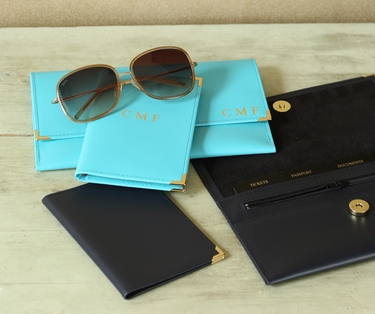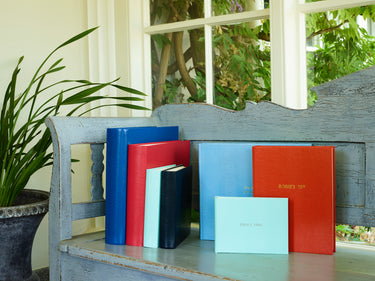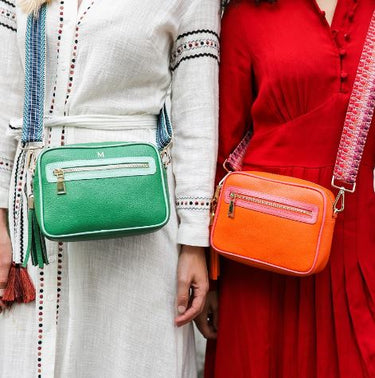Perudo: The Ultimate Guide

For many years Noble Macmillan has been known first and foremost for our gorgeous handcrafted Luxury Photo Albums and Luxury Photo Frames. However, our now ever-expanding collection of Luxury Games has also become synonymous with our brand. From this vast and popular collection of products, there has been one stand-out and consistent best-seller that you can’t seem to get enough of, our Luxury Perudo Sets.
Therefore, it seems sensible that we have finally put together this article, ‘Perudo: The Ultimate Guide’, in which we will explore what Perudo is, how to play, its origins, and how to win at Perudo. So…
What is Perudo?
Perudo is a game of ‘guesswork, bluff and luck’. The game is typically played with 5 or 6 players using dice and as many cups as there are players. The game, formerly known as ‘Liar’s Dice’, originates from Peru and has multiple variations of how to play with the same goal – the last player with any dice remaining is the winner.
It is a fantastic game and great way of getting family and friends together, with an incredible knack for bringing the competitive side out of the most unexpecting.

How do you play Perudo?
As previously mentioned, each player in a game of Perudo has a cup and begins the game with 5 dice in the cup. Each round starts with every player shaking their dice inside the cup and tipping them onto a table ensuring they are still covered by the cup so the other players can’t see.
Then a designated player states how many of one type of dice are under all of the dice on the table… 1s are ‘wild’ meaning they can be anything – key to keep in mind for a winning strategy. For example, I would start and say 2 threes. The next player then has to either increase the number of dice or the number of the dice. Meaning he or she could say 3 threes, or 2 fours, or anything higher than those.
If the player that follows doesn’t believe there are that many dice as has just been stated, they say ‘Dudo’ (meaning ‘I doubt’ in Spanish) rather than guessing a number. Whichever of the two players ‘Dudo-ing’ or being ‘Dudo-ed’ loses the challenge, then loses a dice. The player who lost a die in the last round is the first player in the new round. If the player lost his last die, then the player to his left plays first instead.
This continues until someone in the game only has 1 die left which is when the rules change slightly. At this point, the person with 1 die is called ‘Palifico’ and always starts the round, and no one else is allowed to change the type of dice, only the number of dice… Once multiple players have 1 die, they can change it, but no one else can. The last player left with at least one die is the winner of the game.

How to win at Perudo
The answer to how to win at Perudo is to put into it as equal amount of skill as you do guide… And a bit of luck will take you a long way too. At its heart, the game is all about probability.
Mastering the probabilities of how many if each dice there is likely to be is all part of the skill – working out how best to play these probabilities is key to winning.
First and foremost, you must take into consideration how many dice are in the game and how many are no longer in play while also taking into consideration the numbers you have rolled. Following this strategy, it becomes riskier later in the game (when people are likely to have lost more dice) to bet that there may be higher amounts of any one number on the table.
However, should the numbers you rolled – due to a drop of luck – be the same, this can help give you some degree of certainly when guessing or wishing to ‘dudo’ someone.
For longevity in the game, I suggest playing it safe with just a hint of bluffing only when necessary in the game. Similarly, you may wish to use this method to try and force any potentially difficult decisions or bluffs away from you. Naturally, at the end of the game, when you may be down to 1 die, the bluffing becomes its most difficult and the true winners come to light.
Is Perudo Mayan? The history of Perudo
When researching the origins of Perudo, many have asked, ‘Is Perudo Mayan?’. According to the most famed story or rumour (it is unproven) of the game’s earliest appearance in history, the game is considered to be of Incan descent and not Mayan. Many confuse the Incas with the Mayans; however, the Maya was a Mesoamerican civilisation, meaning they lived in Mexico and Central America. The Incas, as you may have guessed, lived in South America such as Peru.
The rumour begins that in 1532, when Pizarro and his conquistadors ‘conquered’ large parts of South America including Peru, that they held captive the Sapa Inca, Atahualpa. It is believed by many that during Atahualpa’s imprisonment he introduced to Pizarro to the game we know as Perudo, and that Pizarro and his conquistadors brought it back to Spain. What does the word Perudo mean? Well, what we know as ‘Perudo’ is the oldest in a family of games once known as ‘Liar’s Dice’.
The word is a combination of the word ‘dudo’ (meaning ‘I doubt’ in Spanish which was also an early name for the game), and Peru – a name created when the game became commercial and thereby became popularly known as. Before it had the colourful appearance we know a Perudo set to have today, Peruvian artisans skilled in intricate craftmanship made beautiful sets from materials such as wood that were passed on as heirlooms over generations.

The best-selling of our luxury games collection, the game deserves its title. Our gorgeous and fun luxury leather set is as stylish as it is entertaining – with the added bonus that the lack of board makes it easy to play anywhere. So, whether it be an extremely worthwhile investment for you and your own family, or a truly fabulous gift whatever the occasion, check out our Classic Perudo Set and our Portobello Perudo Set to see which one suits you. Or for larger groups we have our XL Perudo Set. For the ultimate gift see our Perudo Sets in a Luxury Leather Box, personalise both to make them extra special.



















